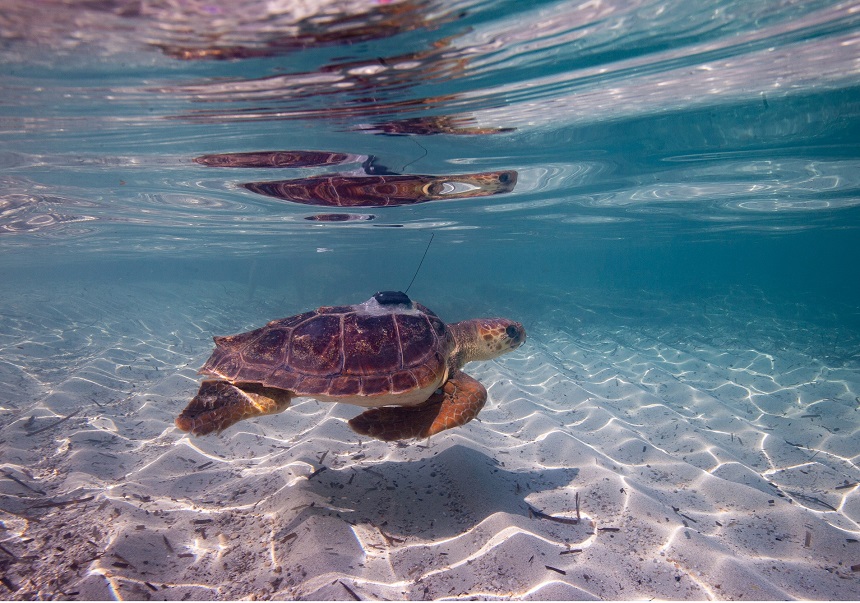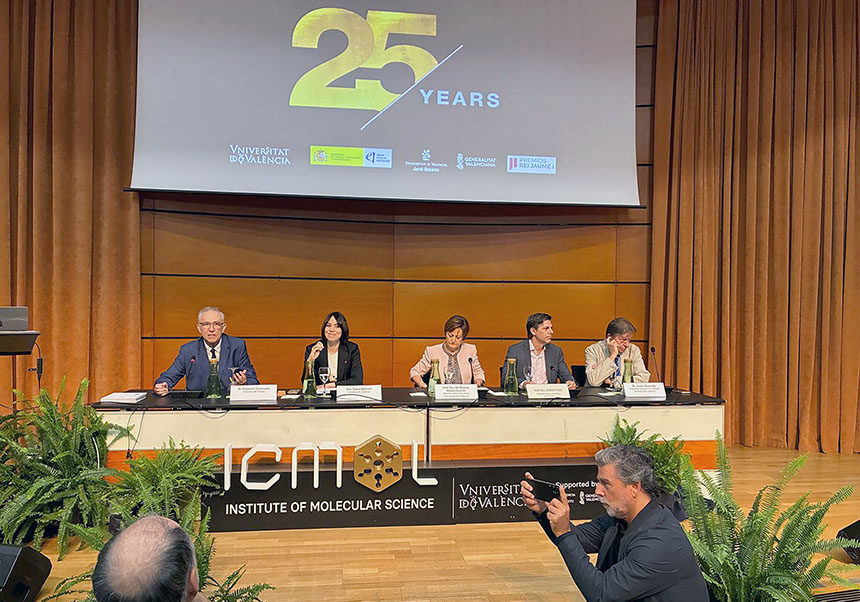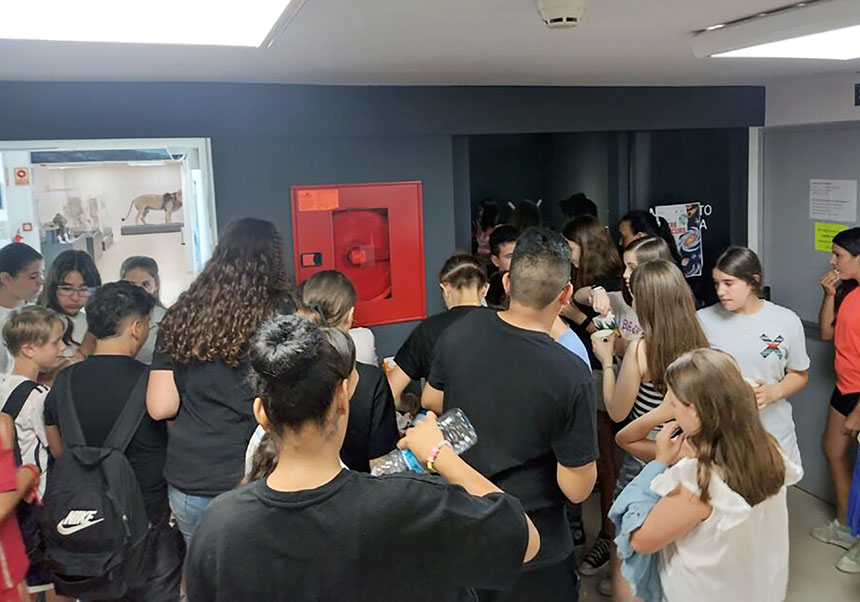The University of Valencia takes part in a world wide study on the conservation of marine megafauna published today in Science
- Scientific Culture and Innovation Unit
- June 5th, 2025

Researchers from the University of Valencia (UV) Jesús Tomás and David March are participating in MegaMove, an international study supported by the UN and published today in Science. Nearly 400 scientists from 50 countries have collaborated to identify the most critical locations for 100 species of marine megafauna. Specifically, the two researchers have studied the movement, distribution and migration of sea turtles in the Mediterranean, eastern Atlantic and Caribbean using satellite tracking systems.
The project, led by the Australian National University (ANU), includes species such as sharks, whales, turtles, penguins and seals—large predators that play crucial roles in marine food webs but face growing threats from human activity. Among other concerns, a third of this megafauna is at risk of extinction and over 75% of their critical habitats overlap with fishing activity, maritime traffic, plastic pollution or rising sea temperatures.
Moreover, 66% of the space used by these animals is essential for key behaviours. Thus, 50% is used for migratory behaviour and 45% for residence behaviours such as mating, foraging or resting.
Jesús Tomás, expert in sea turtles, lecturer in the Department of Zoology at the Faculty of Biological Sciences and researcher at the Cavanilles Institute (ICBiBE) of the UV, explains:"Large marine vertebrates are more difficult to study than terrestrial ones because of the difficult access to them; however, satellite tracking allows us to obtain detailed and up-to-date information about their behaviour, habitat use, distribution and migratory routes, as well as the human-related threats they may encounter during their journeys at sea".
David March, CIDEGENT excellence researcher at the Cavanilles Institute of Biodiversity and Evolutionary Biology (ICBiBE) of the UV—who also studies the use of electronic systems to monitor human activities such as fishing or maritime traffic—adds:
"This work provides, for the first time, a global view of the areas where the greatest overlap between human pressures and marine megafauna occurs".
In previous studies, these researchers have already shown that current marine protected areas are not sufficient to safeguard the critical habitats of these species. Both scientists are also involved in the European LIFE OASIS project, which explores how to protect sea turtles from abandoned fishing gear in the Mediterranean.
The study published today in Science, based on over 12,000 tracks of 110 species covering 71.7% of the world’s oceans over a 30-year period, reveals that existing marine protected areas cover only 8% of the world’s ocean— a figure far short of the 30% target set by the UN’s High Seas Treaty. The research concludes that although the current treaty—signed by 115 countries but not yet ratified—is a step in the right direction and key to advancing conservation, it falls short of protecting all critical areas used by threatened marine megafauna. The findings suggest that additional measures to mitigate threats are also necessary.
Lead author and marine ecologist professor Ana Sequeira from ANU notes that the areas used by marine megafauna for essential behaviours can only be identified by tracking their movement patterns:"These areas overlap significantly with threats such as fishing, shipping, temperature rise and plastic pollution", she states. The researchers propose not only protecting certain areas, but also implementing mitigation strategies such as altering fishing gear, using different lighting on nets and redesigning maritime traffic schemes.
The research also aligns with the UN Sustainable Development Goals—specifically Goal 14 on life below water—and with Target A of the Kunming-Montreal Global Biodiversity Framework, which aims to halt human-induced extinction of threatened species.
Article reference: Ana M. M. Sequeira et al. Global tracking of marine megafauna space use reveals how to achieve conservation targets. Science. Vol. 388, No. 6751. DOI https://www.science.org/doi/10.1126/science.adl0239
Annex photo caption:
- Jesús Tomás (left) and David March (right), researchers at the University of Valencia.
File in: Recerca, innovació i transferència , Internacionalització recerca , Institut Cavanilles de Biodiversitat i Biologia Evolutiva , Facultat de Ciències Biològiques , Zoologia , Cultura Científica , Difusió i comunicació científica , Thesaure UV , Investigació a la UV












